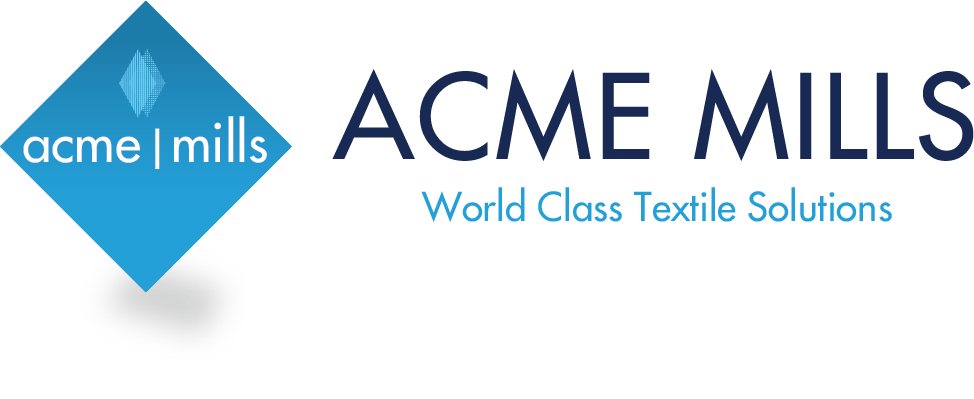Introduction To Automobile Textile
The automobile is the lifeline of present society. Trade, Industry and Commercial activity extremely dependent on this sector. Therefore, it is no exception that tremendous growth and development is taking place in this sector.
This automotive sector consumes a lot of textile materials that may be visible or concealed in the automobile. The global consumption of textiles used in the automobile industry is estimated to be over 4.5 lakh tonnes. The percentage of textile material used in motor car amounts to 2.2% of the overall weight of the car.
These automotive textiles form the components of the Mobiltech segment of Technical textiles. Hence the growth and potential of this technical textile segment are evident as per the DRA report on “World Market for Technical Textiles, 2010”, of the 12 sectors of technical textiles, Mobiltech is one of the growing areas. About 14 % of the market for technical textile is composed of Mobiltech products.
They are used in the construction of automobiles, railways, ships, aircraft, and spacecraft. Examples are Truck covers (PVC coated PES fabrics), car trunk coverings (often needle felts), lashing belts for cargo tie downs, seat covers (knitted materials), seat belts, nonwovens for air filtration, airbags, parachutes, boats (inflatable), air balloons.
These textiles are used in automobiles, ships, and aircraft. Many coated and reinforced textiles are used in materials for engines such as air ducts, timing belts, air filters, non-wovens for engine sound isolation. A number of materials are also used in the interior of cars. The most obvious are seat covers, safety belts, and airbags but one can find textiles also for the sealing.
Nylon gives strength and its bursting strength is high is used as airbags in cars. Carbon composites are mostly used in the manufacture of airplane parts while carbon fiber is used for making higher-end tires. High tensile polyester is used for making air balloons.
Nearly two-third of the automobile textiles are for interior trim, i.e. seat cover, carpets and roof and door liners. The rest is utilized to reinforce tires, hoses, safety belts, airbags, etc. It is projected that nearly 45 square meters of textile material is utilized in a car for interior trim (seating area, headlines, side panel, carpet, and trunk).
According to a survey, the percentage of textile in a motor car amounts to 2 percent of the overall weight of a car. Apart from this, visible textile components, eliminating hidden components such as in tires and composites, hoses and filters; amount to 10-11 kg per vehicle in absolute terms. Industrial textiles are largely utilized in vehicles and systems including cars, buses, trains, air crafts and marine vehicles.
In the global growth scenario, Asian countries are expected to get a major share of this demand, as compared to other developed countries. The big players will be in the market and hence there will be a great deal of sourcing material from the local market.
India has a great potential to grab its due share of this rapidly growing market once we are able to harness mature technology in this field. With this focus, the subsequent sections of this paper depict the technology of development of these products and their market scenario, globally as well as nationally.
Need For Automobile Textile
- Reducing vehicle weight for cutting down CO2 emission and achieving better fuel-efficiency, the trend is towards lightweight vehicles replacing metal by fibre composites in most of the applications.
- Improvement in the standard of living of people resulting in the greater demand for personal vehicles, a car interior has become more important as people are spending more time in cars.
- More safety devices in the vehicles in the form of airbags and seat belts.
- Ecological reforms for recycling of used cars have increased the number of textiles in an automobile.
- Apart from interiors and safety, textiles have also come up with the solution to engineering problems such as tire reinforcement, acoustics protection, gas and air filtration.
Testings Required For Auto-Mobile Textiles
- Light Fastness
- Colour Fastness
- Tensile Strength
- Ageing
- Fogging/Emissions
- Dirt Resistance
- Abrasion
- Pilling
- Snagging
- Tear Strength
- Bursting Strength
- Dimensional Stability
- Drape
- Stain Repellency
- Water Wicking
- Compression
- Resistance To Microorganisms
- Flammability
Classification Of Automobile Textiles
The automobile products can be broadly classified into two categories:
- Visible Components
- Concealed Components
Visible Components
These components are those which add to the interior trim of the automobile to provide comfort and style. Apart from style some safety components also fall into this category, this includes:
1 Seat
The seat is probably the most important item in the car interior. It is the first thing the customer sees when the car door is opened and he or she will probably instinctively touch it; there is only one opportunity to make the most of this first impression. The seat is also the main interface of man and machine and seat comfort is of paramount importance.
Textiles have become by far the most widely used material in seat coverings and are beginning to be used in other areas of the seat in place of polyurethane foam. They are also used in a number of specialist cases in place of metal springs and the actual seat pan and seat back.
The use of one material; polyester, in the face fabric, polyester nonwoven in the cover laminate and polyester nonwoven also in the seat squab and cushion, would certainly simplify recycling and disassembly.
DuPont has developed polyester nonwoven fiber ‘clusters’, which can be formed into seat cushions and squabs in place of polyurethane foam. Benefits claimed to include 20% reduced weight and increased comfort through improved breathability and recyclability. With polyester-based material used as webbing and a polyester fabric covering and scrim, the whole seat in just one material becomes easily recycled.
2 Seat Cover
Tunnel Tie
Hope Webbing Company of Rhode Island, USA, has introduced yet another new method of securing seat covers over the foam cushion. It features a specially designed sleeve through which a drawcord passes. The sleeve is sewn to the edge of the seat cover, which is then drawn over the foam cushion and the cover is secured by pulling the cord tight.
Tunnel Tie is economical and simple to use without the need for hooks, ‘hog rings’ or plastic clips. It is also easier to disassemble, which could facilitate recycling, and seems to be especially suitable for detachable seat covers, which can be changed by the customer.
3-D Knitting Of Car Seat Covers
This highly advanced, computer-controlled knitting technique enables several conventional cuts and sews panels to be replaced with just a single 3-D shaped piece. Car seat covers can be knitted in just one piece; the single item includes all tubes, flaps and ties downs necessary for direct fitting. The labour intensive stages of panel cutting and sewing of up to 17 individual pieces of fabric are reduced to just one or two with no cutting waste.
The 3-D technique allows considerable design flexibility and creativity. Computer-assisted design ‘paint box’ systems facilitate design themes; visual appearance can be dramatically modified by changes in fabric construction, yarn type, and color. Logos can be accurately placed.
3 Headliners
Headliners are modular parts fitted tightly into the interior roof of a vehicle to provide aesthetics, sound absorption, thermal insulation and cushioning in a light-weight construction. They are semi-rigid modules consisting of at least three layers laminated together: an aesthetic facing fabric, a foam backing and the substrate, which is also referred to as the core.
At one time the headliner was simply a covering for the metal roof inside the car and consisted of a piece of fabric, PVC or some other material sometimes simply ‘slung’, i.e. held in place only at a few points. Over a last 20 years, they have been developed in a sophisticated module component. Nonwoven fabrics in headliners take the form of facings, backings or substrate depending on the engineering design of the particular module.
Nonwoven facings are made of needle punched, stitch-bonded or to a more limited extent hydroentangled fabrics produced from dry-laid spun-dyed PET fibres which compete with traditional warp knitted tricots.
The modern headliner is multiple laminates of up to seven or more components all joined together, see Figs 6.4 and 6.5. Each layer is there for a specific purpose either for aesthetics, to provide sound insulation, vibration damping or to provide rigidity to the whole structure.
The center core of polyurethane is bonded to two layers of chopped fiberglass rovings, one on each side. The fiberglass rovings are bound together and embedded in the thermoplastic material, i.e. hot-melt adhesive powder or hot-melt adhesive film, e.g. Xiro film, or a combination of both. These materials also act as the adhesive when the layers are joined together.
4 Bonnet Liners
The bonnet liner and associated fabric linings in the engine compartment have both thermal and sound insulation functions. The bonnet liner provides a protective layer between the top of the engine and the underside of the bonne, which may be constructed from metal or a fibre reinforced plastic composite depending on the vehicle manufacturer.
Bonnet liner modules are composed of a stiffening component such as a glass fabric, foam or a resin-bonded nonwoven fabric composed of reclaimed fibres covered in a nonwoven facing such as PET spunbond. Spunbond, dry-laid chemically bonded and dry-laid needle punched fabrics are all utilized.
A traditional construction is a nonwoven fabric composed of glass fibre combined with a film layer but these have now evolved into more sophisticated nonwoven fabrics composed I part of microfiber nonwovens. Modern bonnet liners enable active rather than passive noise reduction limiting the vibration reaching the cabin.
Mouldable and recyclable nonwoven fabrics composed of PP and PET has been developed that are needled to a facing fabric producing a fully integrated acoustic component.
5 Door Casings
In the door, the panel trim including the inserts and bolster, underlying reinforcement fabrics and lower facing fabrics composed of nonwovens. The facings are composed of flat or random velour needle-punched materials but there is also a good potential for hydroentangled fabrics.
Environmentally sustainable natural fibres are also found indoor panel applications. Short-cut bast fibres, such as flax and ramie have been used to reinforce thermoplastic composite structures for years. More recent development has included the use of needle punched hemp/flax fabrics (50/50) to reinforce thermoset compression molded composite products. Epoxy resin is used as the impregnation medium in the BMW 5 series.
6 Floor Covering
Automotive facings in floor coverings are either tufted or needle punched fabric produced from spun-dyed PA (tufted), PET or PP fibres (needle punched) depending on the durability, cost and required specifications, which vary globally between vehicle manufacturers.
Cut-piles are more extensively used then loop pile. Of the interior carpet, about 55% is composed of nonwoven fabrics with tufted accounting for 45%. The gradual shift towards needle punched fabric is being driven principally by a desire to reduce cost but also reflects technical progress in achieving improved aesthetic appearance, abrasion resistance, pile stability and cleanability of needled fabrics.
Compared to tufted fabrics, needle punched fabrics have a shorter pile and a different surface structure, which affects the appearance and wear resistance of the floor covering, particularly in relation to pile crushing/recovery and soiling.
7 Seat Belts
Seat belts are multiple layers is woven narrow fabrics in twill or satin construction from high tenacity polyester yarns, typically 320 ends of 1100 dtex or 260 ends of 1670 dtex yarn. These constructions allow maximum yarn packing within a given area for maximum strength and the trend is to use coarser yarns for better abrasion resistance.
For comfort, they need to be softer and more flexible along the length, but rigidity is required across the width to enable them to slide easily between buckles and to retract smoothly into housings. Nylon was used in some early seat belts but because of its better UV degradation resistance, polyester is now used almost exclusively worldwide.
The fabric is about 50 g/linear meter (about 5 cm wide) loomstate but about 60 g/linear meter after finishing. This is because shrinkage is induced in the finishing process to improve the energy absorption properties. Controlled, limited non-recoverable (i.e. not elastic) stretch reduces deceleration forces on the body in a collision.
Performance standards (e.g. BS 3254) typically require a belt to restrain a passenger weighing 90 kg involved in a collision at 50 km h-1 (about 30 mph) into a fixed object. Straight pull tensile strength should be at least 30 kN/50mm. Other tests include accelerated ageing and, in the made-up form, resistance to fastening and unfastening 10 000 times.
The seat belt must last the lifetime of the car without significant deterioration. Studies in the 1970s concluded that seat belts could reduce fatal and serious injuries by 50%. About 14m of seat belt fabric weighing about 0.8 kg are present in every new car and total usage is about 32 000 tonnes per annum.

















